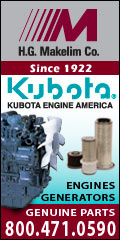
| Past Issues/Subscribe | Advertise |
High-Speed Rail Funds Designated Just for California's Central Valley
Because the state rail authority faces strict deadlines for using its share of federal stimulus money, the conditions on Thursday's grant have the practical effect of requiring the first section of the system to be built in the Valley – even though the state has not yet decided where to start construction. Four distinct sections are being considered by the state rail authority to be built first: the two Valley segments, and planned segments from San Francisco to San Jose and from Los Angeles to Anaheim. Ultimately, the system would carry passengers between San Francisco and Los Angeles at speeds up to 220 mph. The authority's board is set to discuss and approve criteria for scoring the four segments on environmental, engineering and operational factors, as well as meeting construction deadlines for the federal stimulus money. Construction of the first phase must begin in 2012 and be completed by 2017. A final choice is expected in late November or December. How the federal purse strings will influence that decision, however, is uncertain. "We will stick to our procedure," said Roelof van Ark, CEO of the California High-Speed Rail Authority. Between the first and second rounds of federal money, and state matching funds from Proposition 1A, a high-speed rail bond approved by California voters in 2008, the state authority has about $4.3 billion to start construction on the first segment. But if the authority does not choose either the Merced-Fresno or Fresno-Bakersfield section, "we would have a billion dollars less," van Ark said, counting both the federal grant and matching funds. Van Ark said he did not know why federal officials excluded the San Francisco-San Jose and Los Angeles-Anaheim segments from the grant. The $715 million federal grant for the Valley is part of $2.4 billion announced Thursday by the Department of Transportation and the Federal Railroad Administration for 54 high-speed rail projects across the country. It is in addition to $8 billion awarded to states last year from a first round of federal stimulus funds. In documents issued Thursday, the Federal Railroad Administration said money for the Merced-Fresno or Fresno-Bakersfield segment will help pay for "construction of new high-speed rail lines, stations and positive train-control implementation along the Central Valley section of the California high-speed rail system." At the October 28 conference, Federal Railroad Administrator Joseph Szabo would not discuss why the Valley was singled out for funding. He referred questions to his agency's staff in Washington, D.C. In an e-mail response to questions from The Bee, the Federal Railroad Administration said that "development of either Central Valley section would advance long stretches of the new high-speed intercity passenger train system" and offer benefits for air quality and highway congestion, as well as connections with existing transportation systems. But the federal agency sidestepped whether the grant's conditions are hijacking the state's process for selecting the first segment. "FRA's selection decisions are based on detailed review of the applications submitted by the [state] using pre-defined criteria outlined in each solicitation," the e-mail stated. The state board "will decide between the two [Valley] scenarios," the agency's e-mail said, adding that state and federal officials will work together "to define specific projects." Costa acknowledged the state authority "has to do its due diligence" to evaluate environmental issues and other factors. But, he said, "the authority is mindful that they need federal dollars to build this system." State officials estimate that it will ultimately take about $43 billion over the next 10 years to create an operational high-speed rail system in California. The long-range plans call the system to be a public-private partnership, using the nearly $10 billion authorized by Prop. 1A and securing about $18 billion in federal funds. Officials hope that private companies, including train manufacturers and operators, will invest in another $15 billion. |

| calrental.org |



